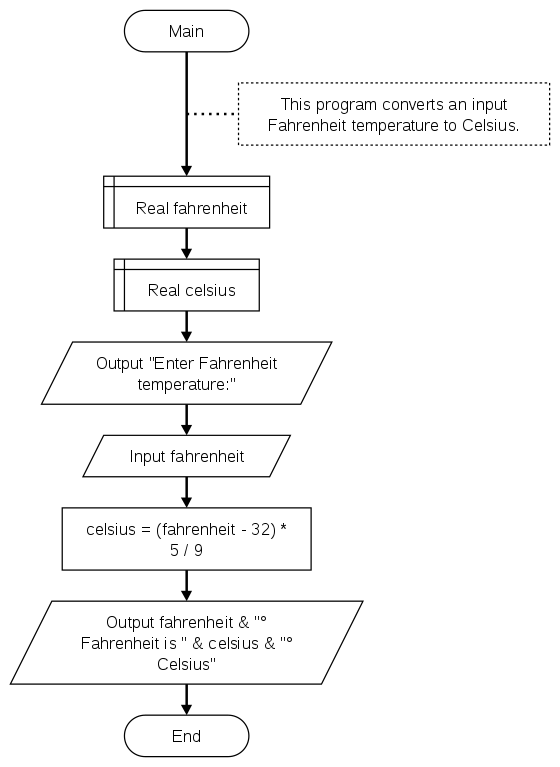2.20: Input-Process-Output Model
- Page ID
- 10612
Overview
The input–process–output (IPO) model is a widely used approach in systems analysis and software engineering for describing the structure of an information processing program or another process. Many introductory programming and systems analysis texts introduce this as the most basic structure for describing a process.[1]
Discussion
A computer program or any other sort of process using the input-process-output model receives inputs from a user or other source, does some computations on the inputs, and returns the results of the computations. The system divides the work into three categories:[2]
- A requirement from the environment (input)
- A computation based on the requirement (process)
- A provision for the environment (output)
For example, a program might be written to convert Fahrenheit temperatures into Celsius temperatures. Following the IPO model, the program must:
- Ask the user for the Fahrenheit temperature (input)
- Perform a calculation to convert the Fahrenheit temperature into the corresponding Celsius temperature (process)
- Display the Celsius temperature (output)
Pseudocode
Function Main
... This program converts an input Fahrenheit temperature to Celsius.
Declare Real fahrenheit
Declare Real celsius
Output "Enter Fahrenheit temperature:"
Input fahrenheit
Assign celsius = (fahrenheit - 32) * 5 / 9
Output fahrenheit & "° Fahrenheit is " & celsius & "° Celsius"
End
Output
Enter Fahrenheit temperature: 100 100° Fahrenheit is 37.7777777777778° Celsius
Flowchart


